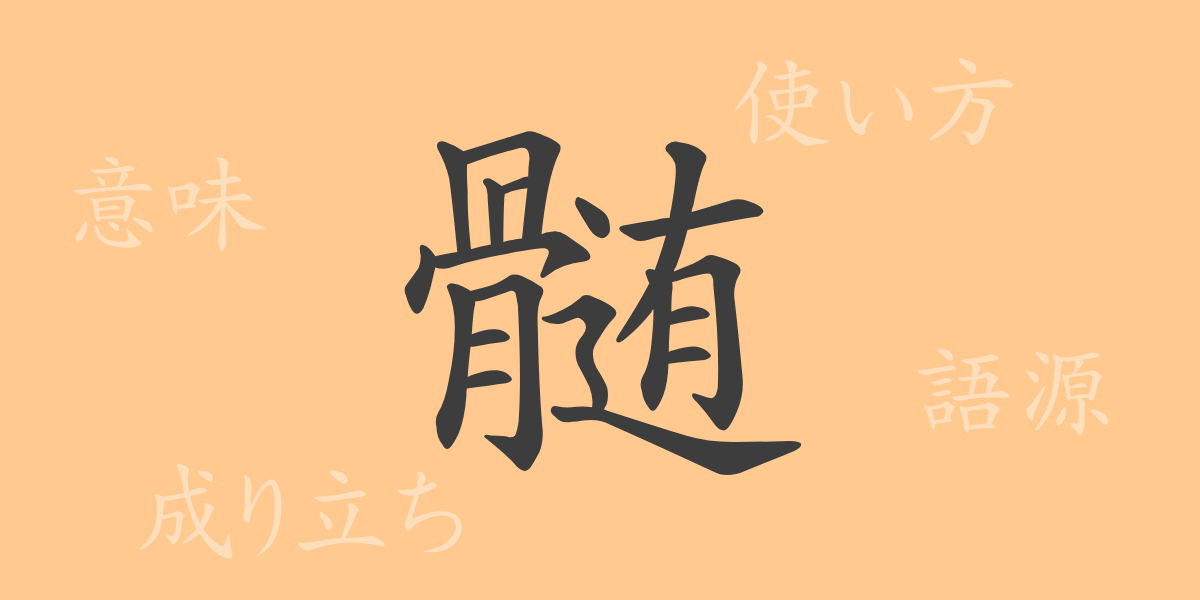In the Japanese language, each kanji character is imbued with profound meanings and history, illustrating the richness of Japanese culture. This article will focus on the kanji ‘髄’ (すい), exploring its origins, meanings, usage, and related expressions. We will delve deep into the world of ‘髄’, uncovering the hidden stories and allure of this character used frequently in everyday life and various contexts.
Origins of 髄
The kanji ‘髄’, which has been used since ancient times to refer to the soft tissue inside bones, combines the character ‘骨’ (bone) with ‘隹’ (to symbolize the pronunciation ‘すい’). This combination is interpreted as symbolizing the vitality contained within bones.
Meaning and Usage of 髄
Literally referring to bone marrow, ‘髄’ also metaphorically represents the most crucial or central part of something. It is used in the phrase ‘精髄’ (essence), referring to the most refined and essential aspects of a subject or theme.
Readings, Stroke Count, and Radical of 髄
The kanji ‘髄’ offers interesting features regarding its readings, stroke count, and radical classification:
- Readings: On’yomi ‘スイ’, no specific Kun’yomi.
- Stroke Count: 19 strokes.
- Radical: 骨部 (bone radical).
Phrases and Idioms Using 髄
‘髄’ appears in several idiomatic expressions and phrases, enriching the Japanese language:
- 精髄 (せいずい): The most essential and critical part of something.
- 骨髄 (こつずい): The soft tissue inside bones; metaphorically, it can also refer to innate characteristics or qualities of a person.
- 髄一如 (ずいいちにょ): A concept where essence and phenomena are unified.
These phrases and idioms not only deepen the expressive power of the Japanese language but also reflect the underlying culture and philosophy.
Conclusion on 髄
The kanji ‘髄’, while primarily denoting bone marrow, plays a significant role in Japanese language through its use in idioms that touch on the core of various matters. From representing literal marrow to expressing the essence of complex concepts, ‘髄’ exemplifies the expressive richness of the Japanese language. This exploration has hopefully provided a deeper understanding of each kanji’s meanings, reaffirming the depth and beauty of Japanese linguistic traditions.

























